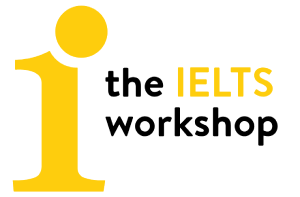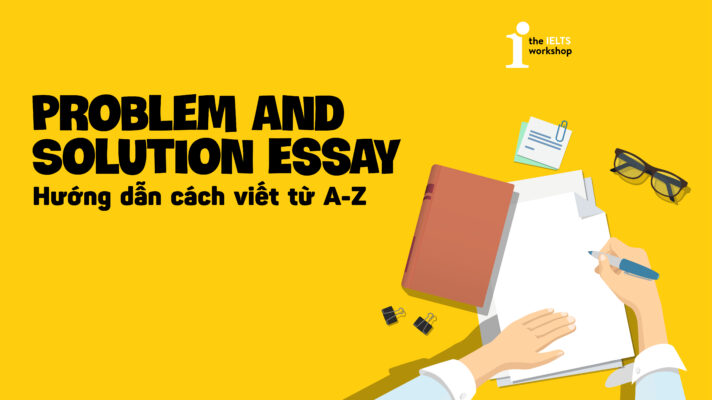Trong IELTS Writing Task 2, chủ đề về truyền thông thường xuất hiện dưới nhiều góc độ, trong đó “Negative news in the media” là một dạng tiêu biểu. Bài viết dưới đây do cô Nguyễn Mai Linh biên soạn sẽ giúp bạn hiểu rõ cách phân tích và triển khai dạng đề này.
1. Phân tích đề bài:
Đề bài: Negative news in the media trong IELTS Writing task 2
Nowadays, there is a trend that reports of media focus on problems and emergencies rather than positive development. Some people think it is harmful to individuals and to society. To what extent do you agree or disagree?
(Ngày nay, truyền thông báo chí thường có xu hướng đưa tin về các vấn đề tiêu cực và khủng hoảng hơn là những tin tức tích cực. Nhiều người cho rằng điều này sẽ gây tác động tiêu cực đến cá nhân mỗi người và toàn thể xã hội. Vậy, bạn có đồng ý với ý kiến này hay không ?)
Phân tích đề bài
- Essay type (Dạng bài):
→ Opinion essay – Bài luận nêu quan điểm cá nhân.
- Key phrases (Cụm từ chính):
→ Media reports = news coverage, press reporting (tin tức truyền thông)
→ Problems and emergencies = negative events, crises, disasters (vấn đề và khẩn cấp)
→ Positive development = progress, improvements, achievements (những phát triển tích cực)
→ Harmful to individuals and society = damaging to people and the public (gây hại cho cá nhân và xã hội)
- Instruction (Yêu cầu đề bài):
→ Bạn cần đưa ra mức độ đồng ý hay không đồng ý với nhận định rằng truyền thông hiện nay tập trung quá nhiều vào tin tiêu cực gây ảnh hưởng xấu.
→ Đề bài mở cho phép đồng ý hoàn toàn, không đồng ý, hoặc đồng ý một phần, nhưng quan điểm phải nhất quán và có lý lẽ hỗ trợ rõ ràng.
2. Dàn bài chi tiết
Introduction
- Rephrase the idea that modern media tends to emphasize negative stories over positive ones.
(Diễn đạt lại thực tế rằng truyền thông hiện đại thường nhấn mạnh vào các tin tiêu cực hơn là tích cực.)
- State your position: largely agree that this trend is harmful to both individuals and the wider community.
(Nêu rõ lập trường: phần lớn đồng ý rằng xu hướng này gây hại cho cả cá nhân lẫn cộng đồng.)
Body Paragraph 1
- Discuss psychological effects: constant exposure can lead to anxiety, panic, helplessness, or loss of trust in institutions.
- Mention the “mean world syndrome”: people begin to perceive the world as more dangerous than it actually is.
(Đề cập đến “hội chứng thế giới độc ác”: người ta bắt đầu tin rằng thế giới nguy hiểm hơn thực tế.)
- Explain how this affects social behavior: individuals may withdraw from community participation.
(Giải thích ảnh hưởng đến hành vi xã hội: người ta có xu hướng rút lui khỏi các hoạt động cộng đồng.)
Body Paragraph 2
- Explain why media focuses on negative content: such stories evoke stronger emotional reactions and attract attention.
(Giải thích vì sao báo chí tập trung vào nội dung tiêu cực: những câu chuyện như vậy kích thích phản ứng cảm xúc mạnh và thu hút sự chú ý.)
- Acknowledge that negative news can be necessary: for instance, during health crises or natural disasters.
(Thừa nhận rằng tin tiêu cực đôi khi là cần thiết—chẳng hạn trong các cuộc khủng hoảng y tế hoặc thiên tai.)
- Emphasize the problem of imbalance: lack of uplifting stories can reduce hope and social cohesion.
(Nhấn mạnh vấn đề mất cân bằng: thiếu vắng tin tích cực có thể làm giảm hy vọng và sự gắn kết trong xã hội.)
Conclusion
- Reaffirm that an overemphasis on negative reporting is detrimental to mental and social well-being.
(Khẳng định lại rằng việc tập trung quá mức vào tin tiêu cực gây tổn hại đến tinh thần và đời sống xã hội.)
- Call for a more balanced approach in journalism—one that informs but also uplifts and inspires.
(Kêu gọi báo chí nên tiếp cận cân bằng hơn—vừa cung cấp thông tin, vừa truyền cảm hứng.)
3. Bài mẫu (Sample Answer)
In today’s fast-paced media environment, news outlets increasingly prioritize reports on crises, violence, and disasters over stories that highlight progress and success. While there are reasons why such content dominates headlines, I largely agree that this trend has adverse consequences for both individuals and society.
Firstly, a constant stream of negative news can create a distorted worldview. When people are repeatedly exposed to reports of crime, political unrest, or natural disasters, they may develop a sense of fear, helplessness, or even distrust in institutions. This phenomenon, known as “mean world syndrome,” leads individuals to perceive the world as far more dangerous than it actually is. Moreover, such a focus can contribute to anxiety and stress, especially among vulnerable groups like children or the elderly. Instead of feeling empowered, people may withdraw, feeling that problems are too overwhelming to solve.
That being said, it is understandable why media tends to emphasize alarming events. Negative news often triggers stronger emotional responses and, therefore, attracts more viewers. In many cases, reporting on emergencies is essential—for example, during a pandemic or natural disaster—to inform and protect the public. However, the problem arises when media coverage lacks balance. By overlooking positive developments—such as scientific breakthroughs, social movements, or acts of kindness—the media may unintentionally undermine hope and social cohesion.
In conclusion, although there is some merit in focusing on urgent issues, excessive exposure to negative news can be detrimental to individual well-being and the health of society. Media organizations should strive to present a more balanced view of the world, one that informs but also inspires.
Sample by Nguyen Mai Linh, IELTS Teacher at The IELTS Workshop
4. Từ vựng (Vocabulary highlight)
- Fast-paced (adj): nhanh, dồn dập
- Prioritize (v): ưu tiên
- Crises (n): các cuộc khủng hoảng
- Adverse consequences (n): hậu quả tiêu cực
- Distorted worldview (n): cái nhìn sai lệch về thế giới
- Helplessness (n): cảm giác bất lực
- Distrust (n): sự thiếu tin tưởng
- Vulnerable groups (n): nhóm dễ tổn thương (trẻ em, người già…)
- Withdraw (v): rút lui, thu mình
- Emphasize (v): nhấn mạnh
- Trigger emotional responses (v): kích thích phản ứng cảm xúc
- Balance (n): sự cân bằng
- Overlook (v): bỏ qua
- Undermine hope (v): làm suy yếu hy vọng
- Social cohesion (n): sự gắn kết xã hội
- Excessive exposure (n): tiếp xúc quá mức
- Detrimental (adj): có hại
- Strive to (v): nỗ lực
- Inspire (v): truyền cảm hứng
Xem thêm: Giải đề IELTS Writing Task 2 : Crime and Media

5. Từ vựng mở rộng
- Sensationalism – (n) chủ nghĩa giật gân
Example: Sensationalism in media often sacrifices truth for attention.
- Clickbait – (n) nội dung giật tít để câu view
Example: Many online platforms rely heavily on clickbait to increase traffic.
- Media literacy – (n) kỹ năng hiểu và đánh giá truyền thông
Example: Teaching media literacy helps students identify fake or biased news.
- Fear-based messaging – (n) truyền thông dựa trên nỗi sợ
Example: Fear-based messaging can influence behavior but also cause anxiety.
- Constructive journalism – (n) báo chí xây dựng (tập trung vào giải pháp)
Example: Constructive journalism presents solutions, not just problems, which can motivate action.
- News saturation – (n) tình trạng bội thực thông tin
Example: During the pandemic, news saturation led many people to stop watching TV altogether.
- Echo chamber effect – (n) hiệu ứng buồng dội (nghe lặp lại quan điểm giống mình)
Example: Social media algorithms can reinforce the echo chamber effect.
- Information fatigue – (n) mệt mỏi vì tiếp nhận quá nhiều thông tin
Example: Constant notifications and headlines can lead to information fa
Tạm kết
Chủ đề “Negative news in the media” không chỉ đòi hỏi kỹ năng lập luận chặt chẽ mà còn yêu cầu bạn thể hiện rõ quan điểm cá nhân một cách thuyết phục. Mong rằng qua phần chia sẻ của cô Nguyễn Mai Linh, bạn đã nắm được hướng tiếp cận phù hợp để tự tin xử lý dạng bài này trong kỳ thi IELTS.
Tham khảo thêm tại [Cập nhật liên tục] Tổng hợp đề thi IELTS Writing 2025 kèm bài mẫu và Bài mẫu Writing Task 2 để hiểu cách triển khai các chủ đề Writing trong IELTS nhé.
Đăng ký ngay HỌC IELTS MIỄN PHÍ để tham gia lớp học 0 ĐỒNG cùng các giáo viên tại The IELTS Workshop !









